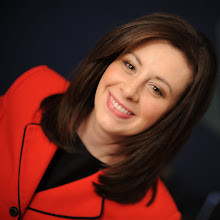On October 1, I shadowed live truck operator Kyle Stokes for the five and six live shot. The reporter going live was Lauren Styler. It was interesting to see the process from both the perspective of the live truck operator and the reporter. We went to Mizzou Arena to cover the National Anthem auditions. First, we went to the side of the building and went down onto the court. After asking one of the staff members stationed down their and three different women’s basketball coaches, we found out there had been a miscommunication between the people at KOMU and the people at Mizzou Arena. This just caused Kyle and I to waste time running around and looking like we didn’t know what we were doing. Eventually we worked it out so we could shoot by the entrance, where people auditioning would go.
When we finally agreed on somewhere we could shoot, we had to pick a good spot that would be interesting to viewers. When we finally picked a spot, we had to get everything set up, which Kyle said can take anywhere from 20 minutes to an hour or maybe more. When setting up, you have to make put up the mast and make sure it points toward the station so its signals will hit the station. The mast can’t go through mountains, hills, buildings, etc… The setting up process seemed complicated because there is so much equipment: camera, cords, lights, the snake, the microphone, the power strip, and finding a power source for everything.
Once everything was set up, Kyle put up the IFB. IFB stands for interruptible feedback (Lauren remarked, “I need to get my own IFB” because they are crucial for live shots) the IFB is a device that allows the reporter and producer to communicate through the reporter’s earpiece. Lauren did, however, bring her own earpiece. In addition to that, Kyle said, “seasonally appropriate” clothes are one of the most important things reporters can bring. He advised me to invest in a good raincoat with a hood, and always have boots, coats, and hand warmers in my car. Also, he said to be sure to bring a pen and paper, your scripts, and the knowledge of where in the show the live shot will be (i.e.: “it’s in A16 but there is also a tease”). Kyle’s favorite reporters to work with are the ones that put on a show and make him look good. Lives shots are the flashy part of news and so if the reporter plays along and does everything full out, then it also makes Kyle look better.
Other than being prepared, there were a few things that Kyle said a reporter could do to help him out. Helping take down all of the equipment is a big help. He said some reporters do their live shot and then head back to the station, so he is very grateful when they stay to help him put everything away. Being on time is helpful as well. The biggest point he made was to communicate! Reporters and producers alike can help him out by communicating. If you don’t tell him exactly what you want, he will do whatever he thinks works, which might not be what you had in mind.
The most common mistake that reporters make is memorizing their scripts. Never, ever, ever, no matter what, memorize your scripts because it just causes more problems. If what you say is one word off or you forget where you are, then you sound worse than if you just have a loose idea or the script and ad lib it. Don’t marry your script, just look down once in a while and read your key bullet points.
This was my last shadow shift and the way I see it, shadow shifts are the perfect introduction before going out the station on your own work. The common thread through all of my shadow shifts was communication. Not communicating was an oft-made mistake and one that causes everyone in the newsroom headaches. Plus, all it takes is a call or a text to make sure everyone is on the same page so the newscast can run as smoothly as possible!




